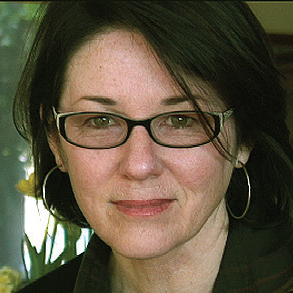 We’re entering a remarkable age of a new understanding about why we behave the way we do and how to change those behaviors.
We’re entering a remarkable age of a new understanding about why we behave the way we do and how to change those behaviors.
And it all starts with the Adverse Childhood Experiences Study — the CDC-Kaiser Permanente ACE Study conducted from 1995 to 1997 that produced four surprising results.
Childhood adversity is extraordinarily common. Nearly two-thirds of the study’s 17,000 participants had at least one ACE.
There’s an unmistakable link between adverse experiences in childhood and adult onset of chronic disease, mental illness, violence and being a victim of violence.
The more types of childhood adversity, the more dire the consequences.
Compared with people with zero ACEs, those with four ACES are more likely to become depressed, twice as likely to be smokers and 12 times more likely to attempt suicide.
ACEs contribute to most of our major chronic health, mental health, economic health and social health issues.
The study’s participants were mostly white, middle- and upper-middle-class college-educated people living in San Diego, Calif. They were all employed and had great health care – they belonged to Kaiser Permanente. Twenty-nine states and the District of Columbia have done their own ACE surveys, finding similar results.
So, why do ACEs cause so much damage?
Brain science. Long-term toxic stress – the kind that comes from living with an abusive parent, for example – damages a kid’s brain. Toxic stress floods the brain with stress hormones. When a kid’s in fight, flight or freeze mode, his thinking brain is offline and doesn’t develop as it should. Kids experiencing trauma act out. They can’t focus. They can’t sit still. Or they withdraw. Fight, flight or freeze – that’s a normal and expected response to trauma. So they can’t learn. When they get older, they cope by drinking, overeating, doing drugs, smoking, as well as overachieving or engaging in thrill sports. To them, these are solutions, not problems. Nicotine reduces anxiety. Food soothes. Some drugs, such as meth, are anti-depressants.
[Related: New Toolkit Issued to Help Providers Measure Trauma With ACES Survey]
Biomedical consequences. Staying in red-alert status puts a lot of wear and tear on the body. So, even if people haven’t smoked or become obese, their risk of heart disease and diabetes increases, as do autoimmune diseases.
Genes and epigenetics. Toxic stress can turn genes on and off. And these changes can be transferred from parent to child. The area of research that looks into how our interaction with the people around us can change our genes is called epigenetics.
With all this bad news about how trauma hurts us, there’s good news, too: Our brains are plastic. Our bodies want to heal.
We know a lot about how to reduce stress hormones in our bodies and brains. We can meditate, exercise, get enough sleep and eat well, have safe relationships, live in a safe place, and ask for and get help.
We can build resilient families. We know educating parents about their own ACEs helps them understand their lives and motivates them to prevent passing ACEs to their kids.
The frontier of resilience research lies in creating systems and communities that prevent childhood adversity and stop traumatizing already traumatized people.
Schools, police departments, courtrooms and youth-services organizations are working to prevent childhood adversity and stop traumatizing already traumatized kids. Trauma-informed schools have eliminated expulsions, and kids’ grades, test scores and graduation rates are higher. Police departments have seen violent crime drop by 30 percent in two years. Ninety-nine percent of children who participate in Safe Babies Courts experience no further abuse.
The first step to providing trauma-informed services is to make sure all staff members know about ACEs, and to integrate trauma-informed, resilience-building practices for everyone who works for or with an agency. It’s like what flight attendants tell you to do in case of an emergency: Put on your own oxygen mask before helping anyone else.
Traditionally, in our culture, we use blame, shame and punishment to try to change behaviors — unhealthy behavior, criminal behavior, “nonconforming” behavior. But lots of evidence shows that approach doesn’t work very well: overcrowded prisons, rampant chronic disease, struggling schools.
With this knowledge, we can change blame, shame and punishment to understanding (what happened to you?), nurturing (how can I help you?), and healing (helping people heal themselves).
Jane Stevens is founder of ACEsTooHigh. com, a news site for the general public, and ACEsConnection.com, a social network for people who are integrating practices based on ACEs research into their organizations.
More related articles:
Minnesota High School Screens Students for ACEs to Develop Trauma-informed Education
A Trauma-informed School Wasn’t Part of My Plan, But Now It’s My Life’s Work
We Know How to Help Foster Kids Despite Past Trauma



























